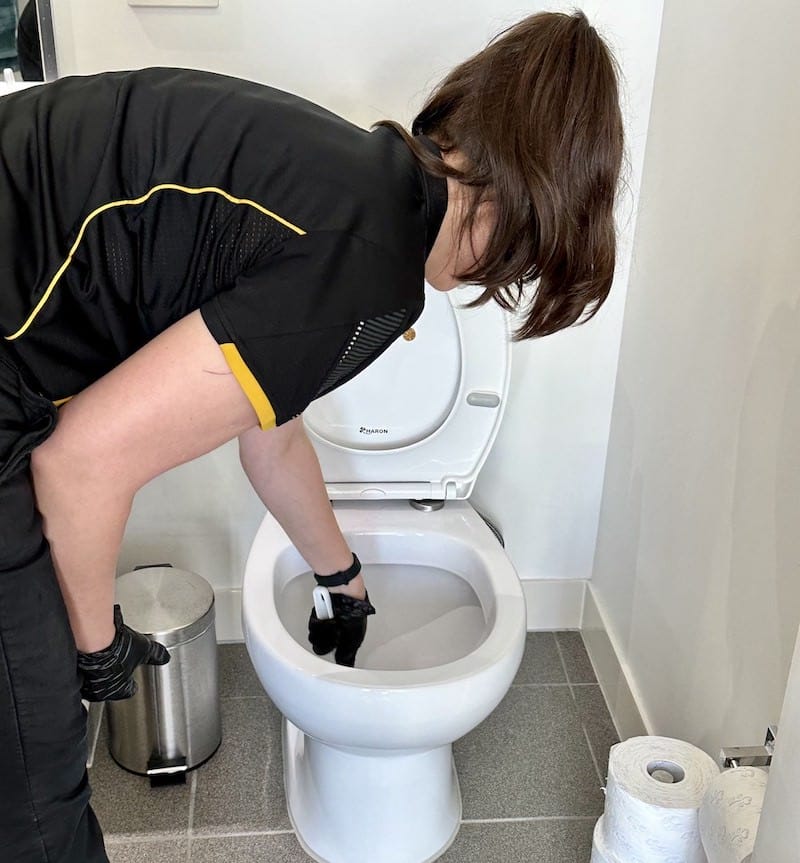The toilet is probably one of the most frequently used seats in any home – which means it should be one of the most regularly cleaned things, too.
But because they’re exposed to so much dirt and moisture, toilets tend to accumulate a lot of stains as well.
How to clean a toilet bowl stain will depend on the cause. Once you’ve identified that, you can choose an effective cleaning solution.
Tackle toilet bowl stains ASAP, and don’t forget to clean the seat, brush, and plunger too!
Hard Water Stains | Rust Stains | Urine Stains | Mould Stains | Blue or Copper Stains | Pink Stains | Other Stains
What Causes Toilet Bowl Stains?
The colour of the toilet bowl stain can tell you a lot about the cause!
Then when you know what’s creating the stain, you can choose the best cleaning solution.
Hard water
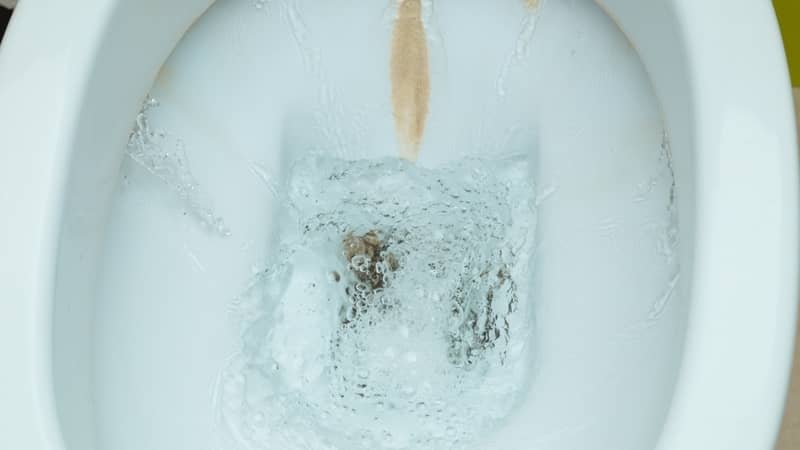
If your home’s water supply uses hard water, that means it has a high mineral content. These minerals are deposited in sinks, shower stalls, and yes, toilet bowls!
Yellow stains in your toilet bowl are caused by mineral buildup (such as calcium) or limescale deposits. Hard water stains can also appear chalky white or rust-coloured.
If you suspect the toilet discolouration is due to limescale and mineral stains, you can have your water tested.
Rust
If you notice dark brown or rust-coloured stains, then you may have a rust problem.
This can be due to one of two things: pipe corrosion or iron in the water. Corroding pipes leak rust into the water running through them, which then gets deposited in the toilet bowl.
On the other hand, high levels of iron will react with oxygen and create iron oxide. This will create rust stains in your toilet.
Urine
While we do flush our wee away, it still causes yellow-brown stains over time.
Common spots for a urine stain in toilet include around the rim and on the U-bend.
Mould and mildew
Dark green or brown stains in your toilet are often caused by mould. These stains are usually accompanied by an unpleasant odour in your bathroom.
It’s crucial that you deal with mould or mildew immediately, or the fungus will spread. Mould is a health hazard and can cause respiratory issues.
Acidic water
For blue stains in your toilet bowl, the usual suspect is highly acidic water that contains copper. Check your local water supplier to see if they’ve issued any notices about the mineral content.
If the tap water tastes metallic, this is likely the cause.
Bacteria
Pink stains in your toilet (or tub and shower) are caused by the bacteria Serratia marcescens. It’s an airborne bacteria that thrives in moist surfaces.
Serratia marcescens occurs naturally in the environment, especially in soil. If you have filters that remove chlorine from water, these increase the possibility of the bacteria appearing.
The bacteria is mostly harmless, but can be pathogenic to some people.
Other products
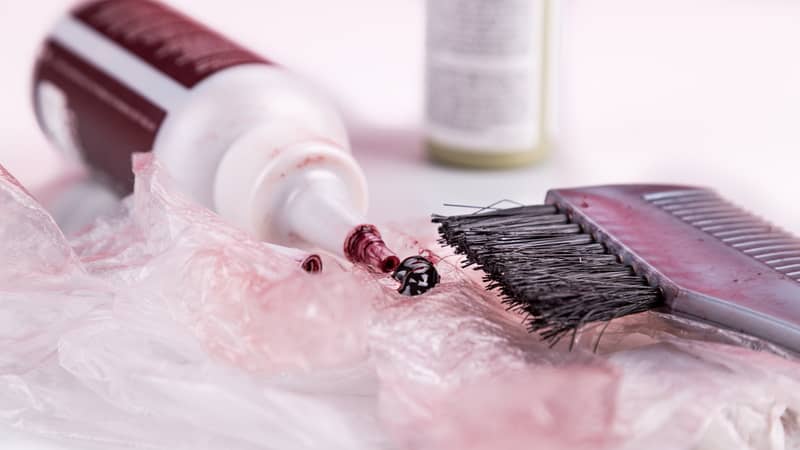
Sometimes, the stains in your dunny are caused by something closer to home – or even right inside it!
Maybe you spilled some fake tanner while applying it in your bathroom. Or maybe you accidentally splattered some hair dye while recolouring your hair.
Many other home products can cause a stain in your toilet, sink, and other areas.
How Often to Clean a Toilet Bowl
It’s important to clean your toilet at least once a week. This maintains good bathroom hygiene and prevents stains from forming.
However, if you notice stains in your toilet, it’s better to tackle them immediately!
Of course, if you’d rather not get cosy with the dunny, a good house cleaning service in your area will take care of it for you.
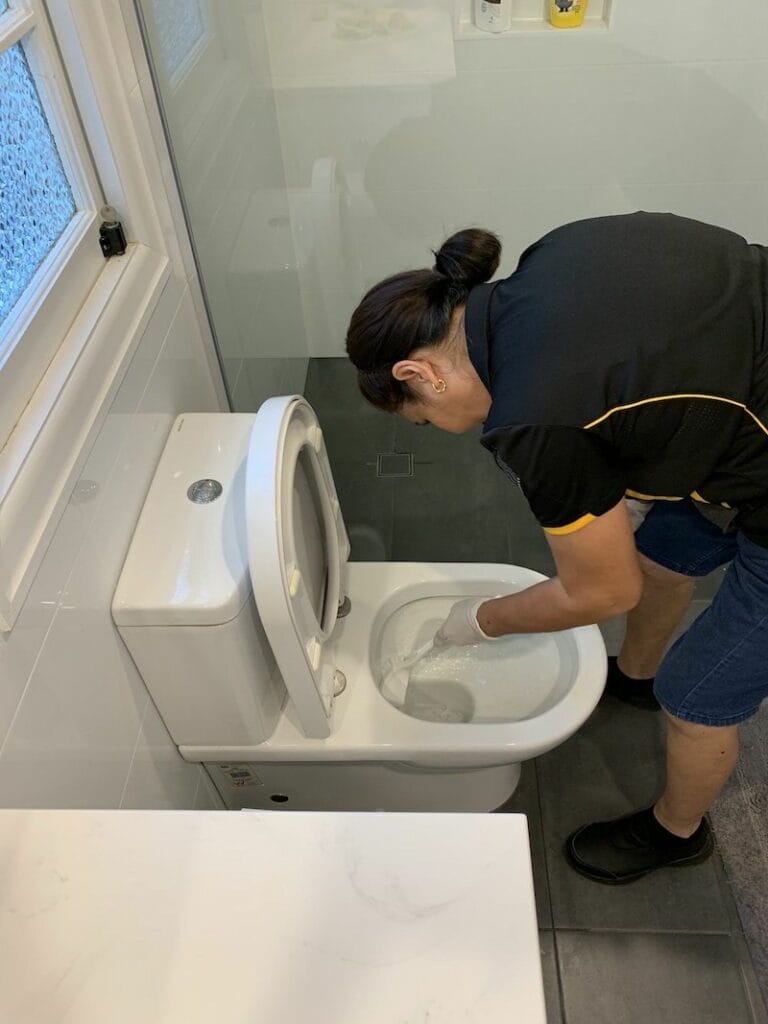
Before Cleaning Toilet Stains
When prepping to tackle the toilet bowl, you’ll need to gather all your tools, including:
- Rubber gloves
- Toilet brush
- Clean cloths and sponges
- Chosen cleaning solution
- Face mask and eye protection if necessary
You’ll also need some elbow grease – stubborn stains will require more scrubbing.
Once you’re ready, shut off the water valve and flush your toilet to drain it.
Alternatively, you can slowly pour in a bucket of water to drain the bowl without triggering the refill.
How to Remove Stains from the Toilet Bowl
Again, remember to wear rubber gloves and other protective equipment while cleaning!
Also, ensure the bathroom is well-ventilated with open windows or exhaust systems.
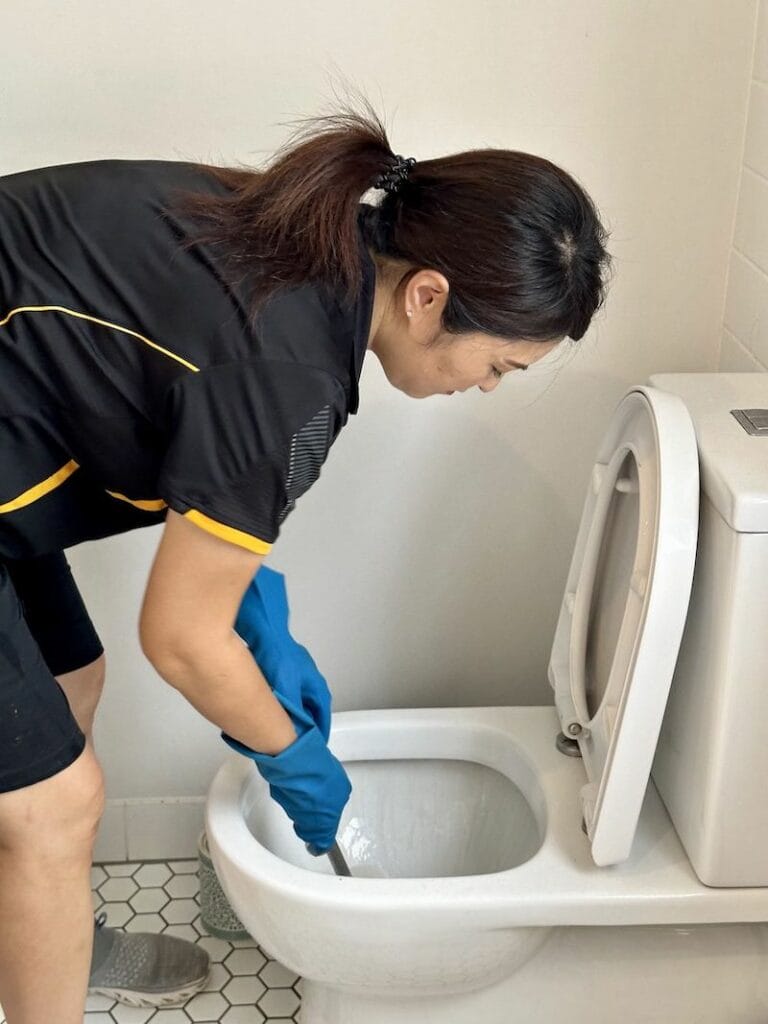
How to remove hard water stains from toilet bowl
There are several ways to remove hard water stains from your toilet.
For milder stains or ones along the water line, you can simply scrub the bowl with a pumice stone or fine-grade steel wool.
Another method to remove stains from mineral deposits uses borax and white vinegar. (Do not add anything else or you could create a harmful chemical reaction!)
Mix half a cup of borax with 1/4 cup of vinegar. Use a sponge or gloved hands to apply the paste directly to the stained toilet bowl.
Let the paste sit for 20–30 minutes, then scrub the stains away with your toilet brush.
Flush to rinse.
TIP: Consider installing a water softener to prevent mineral buildup! It won’t get rid of hard water stains entirely, but it’ll definitely minimise the problem.
How to remove rust stains from toilet bowl
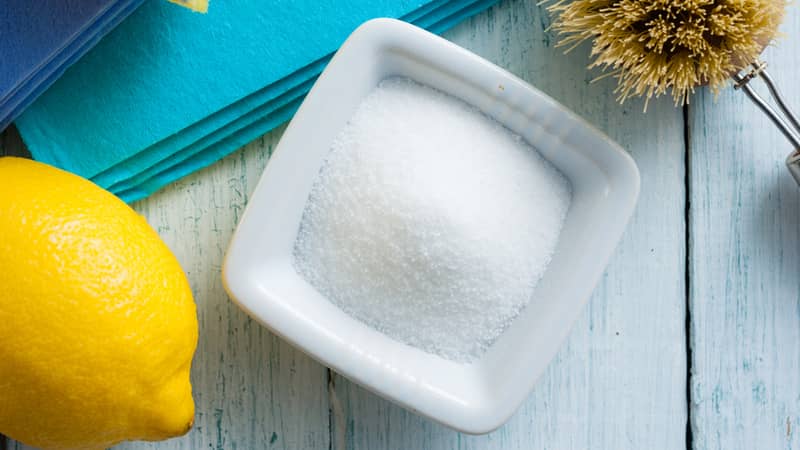
Citric acid is excellent for removing rust stains from your toilet. You can either use fresh citrus (such as lemon juice) or citric acid powder from the chemist.
For a typical rust stain, make a paste from citric acid and water. Apply it directly to the affected area then let it sit for a few minutes.
Following that, start scrubbing with a brush.
If you have more stubborn toilet bowl stains, mix some baking soda with water to make a paste. Spread the paste onto the rusty stain, then add the lemon juice.
Let the paste sit for at least an hour (you can cover it with cling wrap to retain moisture). After that, scrub and watch the stains disappear.
For a badly-stained toilet, you may have to repeat the process.
How to remove urine stains from toilet bowl
If you can leave the toilet alone overnight, carefully pour around 4 cups of vinegar into the bowl and let it sit.
Use a scrub brush the next morning to remove any urine stains.
Alternatively, toss in two dishwasher tablets and leave them to fizz for a few hours. Scrub to clean afterwards.
How to clean mould stains in toilet bowl
If there is mould developing in your toilet bowl, you need to act fast and hit hard.
Bleach is one of the strongest cleaning products you can use to kill off the mould. Opt for oxygen-based bleach, which is less reactive than its chlorine counterpart.
Always make sure to wear protective equipment and keep the room well-ventilated. Open all windows and doors, and switch on the exhaust.
Dilute the bleach according to the packaging instructions. Apply it to the green or brown stains in your toilet.
Let the solution sit for at least 15 minutes before scrubbing and rinsing.
If you prefer not to use harsh chemicals, vinegar is also an effective solution. Look for cleaning vinegar with at least 6% acetic acid.
Apply the vinegar directly to the green or brown stains and let it sit for at least an hour. Scrub then rinse.
How to clean blue toilet bowl stains from acidic water
You can clean copper stains in your toilet by using the one-two punch of vinegar and baking soda.
Mix baking soda with a little water to form a paste. Use a sponge or toilet brush to apply the paste onto the stains and lightly scrub the surface.
Follow this by spraying or pouring vinegar into the bowl. Let the solution sit for about 10 minutes, then either scrub to remove remaining stains or flush to rinse.
Unfortunately, there’s no permanent solution to removing blue toilet stains except to replace your pipes.
How to remove pink stains in toilet
For pink stains caused by Serratia marcescens, bleach is the most effective solution.
Spray diluted bleach onto the bowl’s surfaces and under the rim. Oxygen bleach will work, but chlorine bleach is better.
Let the bleach sit for 15–20 minutes, then flush to rinse.
You can also add 1/4 cup of bleach to the toilet tank, then let it sit for at most 20 minutes. Drain the tank and refill.
How to clean other toilet bowl stains
A baking soda paste or some white vinegar will work for most other stains in your toilet.
The most important factor when cleaning stains is time. The sooner you tackle them, the easier they are to remove.
How to Clean Toilet Bowl Stains Without Scrubbing
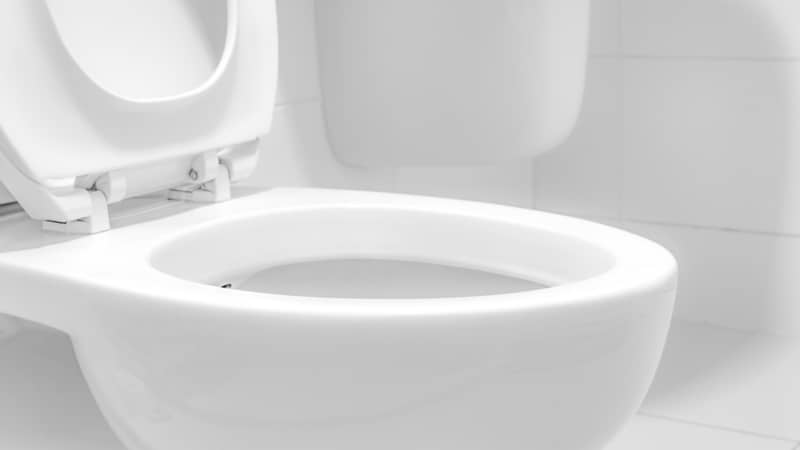
Most stains in the toilet bowl will require some amount of scrubbing to remove – there’s no getting around it.
But for milder stains – especially around the water line and U-bend – there are no-scrub options!
One product that really works is Scalex, a descaler.
Pour 1–2 tablespoons into the toilet bowl and let it sit overnight. Flush the toilet in the morning.
Note that you may need to repeat this process 2–3 times for particularly stubborn stains.
Can You Clean Toilet Stains with Coca-Cola?
This hack has been all over the internet for years – how to clean toilet bowl stains with Coke. But does it actually work, and is it worth doing?
The answer is yes… but it’s not worth changing out your usual cleaning products for soft drinks.
Coca-Cola has a reported acid level or pH of 2.3 to 2.6, mainly due to phosphoric acid. The acidity and carbonation can help remove some stains (such as mineral deposits) if poured into the bowl and left to sit overnight.
However, Coke also contains 39g of sugar per 12oz can, alongside other compounds. So you’ll have to clean your toilet all over again after the Coke or else you’ll have other problems.
Moreover, Coca-Cola isn’t a disinfectant, so you’ll have to use a separate product for that, too.
All in all, while Coke can clean your toilet, you’re better off using plain vinegar – or try one of our recommended toilet cleaners in Australia.
Can You Clean a Toilet Bowl with WD-40?
Once again, we ask – what can’t you use WD-40 for?
Add “cleaning the toilet” to the list of WD-40 applications, since yes, you can use the WD-40 Multi-Use Product to remove hard water stains.
The product softens rust and limescale deposits, which you can then scrub away with a regular toilet brush.
However, you can’t flush it as WD-40 is not greywater or septic-safe. Instead, wipe it off once you’re done cleaning.
General Toilet Maintenance
While getting up close and personal with the porcelain throne isn’t appealing, we should all clean our toilet regularly.
Besides the bowl, you’ll need to wash or wipe the toilet seat, brush, and even the plunger.
You can keep a disinfectant spray or pack of wipes on hand in your bathroom to help keep the space hygienic.
And of course, remember to keep your bathroom well-ventilated. That, alongside routine bathroom cleaning, will help you stay on top of any stains in your toilet – as well as the shower, sink, floor… and anywhere else in your home as well!

